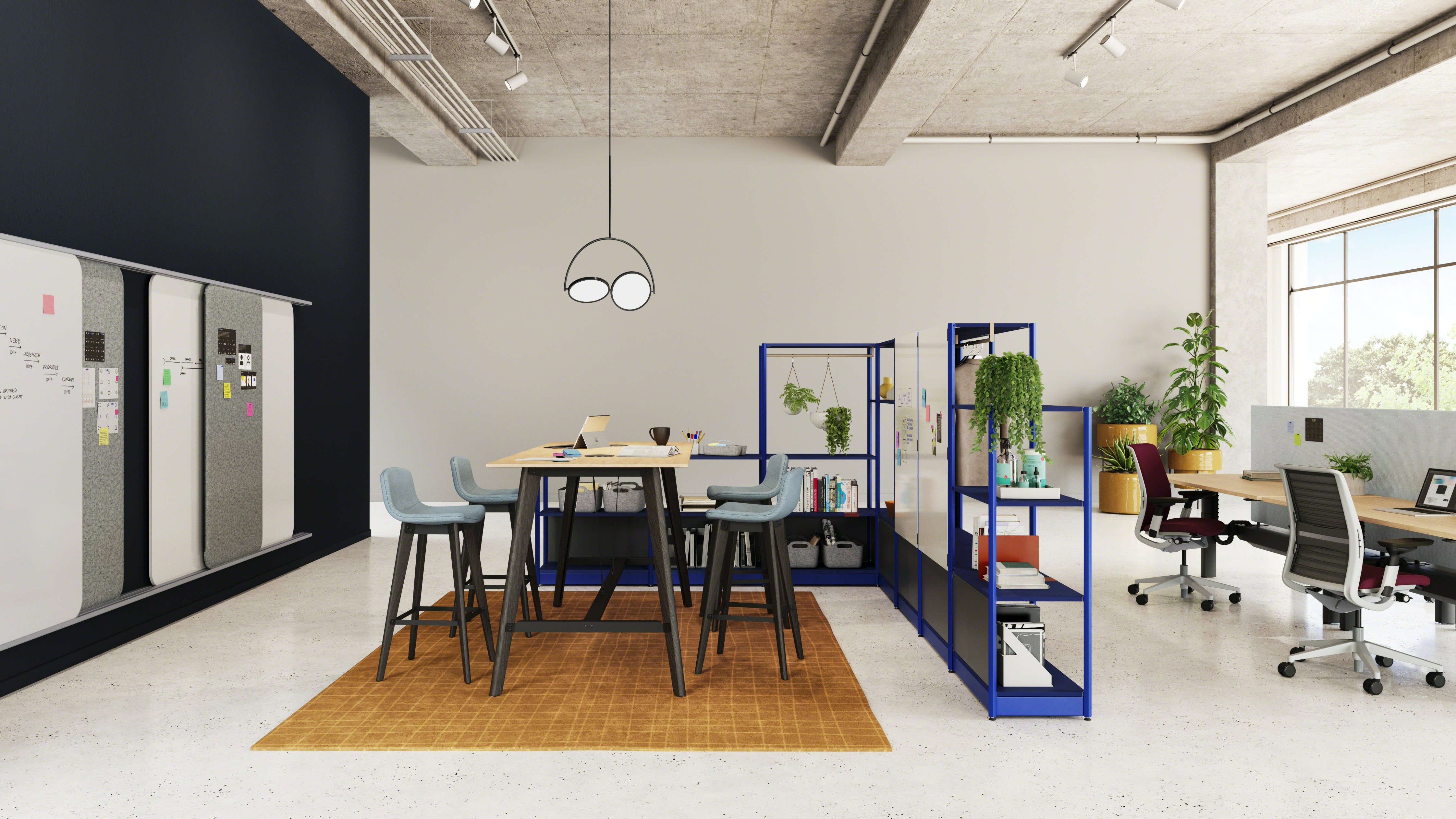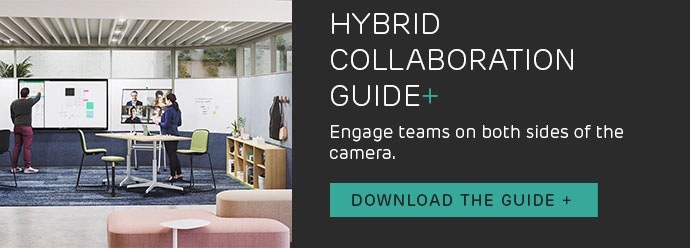More companies looking to transform their workplace are conducting prototypes and pilots to test out new solutions. In fact, new research suggests as many as 94% of global companies plan to run prototypes or pilots.
In this blog post, we take a closer look at this trend and share what we’ve learned from working with our clients.
Why test and trial is on the rise
Prototyping and piloting new workplace settings and furniture solutions looks set to become the new normal as businesses navigate the changing landscape post-Covid.
In doing so, companies can minimise the risk of any investments they make and create an environment that will help them to attract and retain talent.
Ina-Maija Tillmanns, Senior Consultant in the Applied Research + Consulting (ARC) team at Steelcase, explains how the pandemic has been a catalyst for the growing trend:
“Pilots have gained a lot of focus recently, not because people have suddenly become interested but because the coronavirus situation has accelerated the need to find new ways of working.”
Uncertain of what they’re going to need one, two or three years down the line, Ina-Maija tells us how companies can benefit from playing it safe:
“There’s a lot of global evidence that pilots are the right approach to future working because there’s no set way to go about it at the moment. We only have traditional benchmarks that have to be adjusted to the current situation. And we don’t know what’s happening in the next six months.”
The advantage of an iterative approach
There’s no silver bullet for making your workplace transformation a success. Even when conducting pilots and prototypes, procurement teams and facilities managers will need to adopt an agile mindset and iterate their way through the process.
Ina-Maija explains how testing new solutions is best done in phases:
“Doing things in an iterative way means you can switch things around and make changes. Start with phase one, then apply the lessons you’ve learned about how people interact to phase two.”
Nichola Plummer, Design Director at IE shares why being able to change and adapt the setting is so important:
“Often, furniture procurement is not thought about until quite a late stage in the project. But that doesn’t give you much time to go back and change things that aren’t working.
Where clients have been really smart, is in acknowledging that Covid has changed how we work and interact. And they are using this disruptive moment to sense check a direction for their workplace and engage with their staff.”
Mapping it out
An important initial step in your workplace transformation is understanding how people work and what they need from the working environment. This can be captured with staff surveys and interviews with leaders and will help to inform the scenario development and proof of concept. It can be really helpful to create virtual walkthroughs or 360 walkthroughs to visualise the concepts. and how they could look in your space:
The next step is to test out those scenarios with prototypes. Prototypes should come before pilots, as Nichola explains:
“A pilot gives the impression that it has already been through development and is fixed, while a prototype is more fluid and adaptable. It can be unrefined and you can use existing material. There’s also more opportunity to test multiple scenarios simultaneously. It’s the best way to test the functionality of a solution.”
Learnings from the prototyping can then be taken into the pilot. In the pilot, a full solution can be tested amongst a larger group of workers and can run for a longer period - up to three or six months.
.jpg?width=800&name=My%20project%20(2).jpg)
Measuring success
One of the challenges of testing new solutions is identifying how to measure success and gain meaningful insights. Often, the best insights come from a mix of surveying users and observing how they use the space.
Setting up QR codes within the prototype or pilot settings that are tied to a questionnaire can be used to capture feedback from users, as Ina-Maija explains:
“When users enter a setting they can scan a QR code that takes them to a mini survey where they can answer questions about their experience. We can then capture and learn from all that data.”
Defining your measurement criteria is important. Referring to a recent project, Ina-Maija says:
“We defined what we wanted to measure as effectiveness, use and satisfaction, and these are the questions we asked in the mini surveys. So how does the space support key processes such as collaboration and focus work? How do people use the space? Which spaces are used more or less and why? And how do people feel about the space? What do they like? What would they like to change?”
On this particular project, as well as real-time user feedback gathered through surveys linked to QR codes, focus groups and interviews with team leaders observing how people used the space were also conducted. All this data was then analysed and used as a basis for continuous conversation and to discuss the next steps.

The change management piece
Change management matters. Your prototype or pilot won’t work unless your staff are engaged and involved in the process.
Pilots in particular can be a way of taking users on a journey and coaching their behaviours, rather than just testing out a functional setting in the space.
As Ina-Maija points out:
“If you invite people to work in an environment that is completely different to what they had before, you have to prepare them. If you just send them into the space without an explanation, you’ll be setting them up for failure.”
By holding workshops for your staff to explain what you’ve done so far and the intention going forwards, you are more likely to engage people on the journey and end up with an environment that serves them better.
Providing staff with an information booklet, for example, explaining the prototype or pilot settings and a map of where they can find them can also help bring people on board.
But you’ll get the most support by bringing your staff in early on and understanding what they need and want from the workspace.
Workplace Readiness Assessment Survey
The Workplace Readiness Assessment Survey, developed by Steelcase, will help you understand what your people need for a better experience as they return to the workplace. The findings from the survey can be used to help you create scenarios to prototype.
You can learn more about the survey here. It can be set up for you to send out to your entire organisation with the results being sent back to you in a report at the end. There is also an option for a more detailed, customisable version that includes consultancy to analyse the results and provide considerations for next steps.
If you're interested in learning more about the survey or want to discuss how you could test new ways of working in your organisation, then get in touch via the button below.
Summary
The workplace is going through a period of change and transformation. Piloting and prototyping new solutions will therefore be key to preparing for the future. Testing with small groups in the office is a great way to make sure you’re ready to meet people’s needs.






.jpg?width=800&name=My%20project%20(1).jpg)





